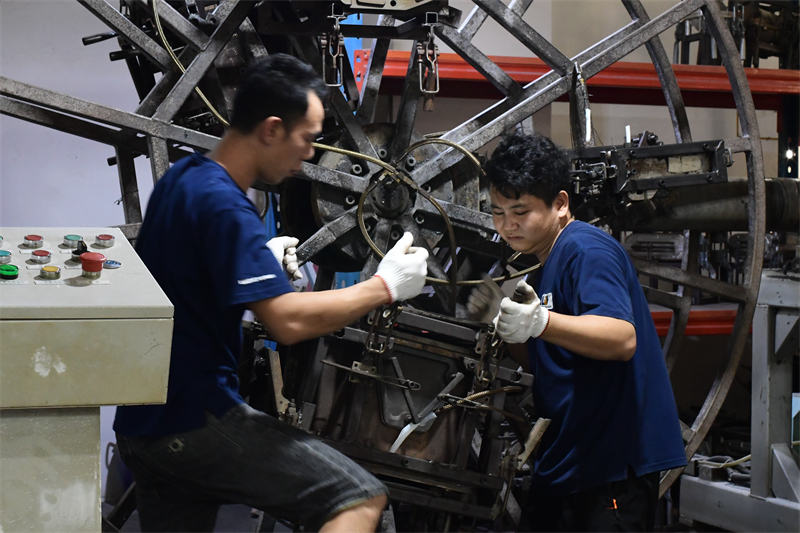How to Enhance Production Efficiency in Custom Rotational Molding?
 Jan 27,2024
Jan 27,2024

How to Enhance Production Efficiency in Custom Rotational Molding?
Rotational molding, also known as rotomolding, is a versatile plastic processing technique used to produce a wide range of products, from toolbox storage case, water tanks to complex industrial components, such as smart robotics shell, remote control lifebuoy shell. The process involves heating plastic resin in a mold until it melts and coats the interior surface. The mold is then rotated on two axes to distribute the melted plastic evenly. As the plastic cools and hardens, it forms the desired shape. Improving production efficiency in rotational molding is essential for reducing costs and meeting market demands. Here are the tips we use at Light Venus to enhance the quality and production efficiency in custom rotational molding.

1. Understanding Requirement of Custom Rotational Molding
Custom rotational molding involves creating unique products to meet specific design and functional requirements. The production and engineering team at Light Venus work closely with customers to understand their challenges and goals, delivering efficient solutions, ensuring that that the final product is exactly what they are looking for.
2.Select Correct Material
Choosing the right plastic material is crucial for production efficiency. Materials with a higher melt flow index facilitate faster melting and curing, reducing cycle times. Additionally, materials that require lower oven temperatures can decrease energy consumption and increase mold life. Here at Light Venus, we offer a wide range of materials with varying properties, ensuring the ideal material is chosen for durability and performance.
3. Streamline Mold Design
Efficient mold design can significantly impact production efficiency. Reducing the complexity of the mold's interior can minimize material waste and reduce cycle times. Smooth mold surfaces reduce friction, allowing for easier release of the finished product and reducing the risk of damage during ejection. Our experienced development team collaborate with clients to enhance functionality, aesthetics, and manufacturability.
4. Adjust Processing Parameters
Fine-tuning processing parameters such as oven temperature, rotation speed, and cooling time can optimize the production process. Higher oven temperatures can speed up melting, while optimal rotation speed ensures uniform coating and reduces imperfections. Adequate cooling time is essential to ensure the product sets properly without compromising structural integrity.
5. Implement Automated Systems
Automating various stages of the rotational molding process can enhance production efficiency. Automated material handling, mold indexing, and post-molding operations can reduce labor costs and human error. Robots can be used for material loading, mold movement, and product removal, increasing throughput and consistency.
6. Enhance Oven Efficiency
The oven is a critical component in the rotational molding process. Ensuring that the oven is properly insulated and maintaining a consistent temperature profile can reduce energy consumption and improve cycle times. Regular maintenance of the oven, including cleaning and calibrating temperature sensors, is essential for optimal performance.
7. Optimize Cooling Processes
Effective cooling is vital for production efficiency. Implementing advanced cooling methods, such as water spray systems or refrigerated air, can accelerate the cooling process without compromising product quality. Quick cooling not only reduces cycle times but also minimizes the potential for warping or residual stresses in the finished product.
8. Continuous Improvement and Training
Regularly reviewing and optimizing the rotational molding process is key to continuous improvement. Training staff on the latest techniques and best practices ensures that the production line operates at peak efficiency. Encouraging employee involvement in problem-solving and process optimization can lead to innovative solutions and productivity gains.
In this way, we conclude that enhancing production efficiency in rotational molding requires a multi-faceted approach, including material selection, mold design, processing parameters, automation, oven efficiency, cooling processes, and continuous improvement. By implementing these practices, Light Venus keeps improving productivity, minimizing waste, increase the output, and bringing important benefits to the organization and customers.
 Tel: 0086-13632687993
Tel: 0086-13632687993  Email: roto@lightvenus.com
Email: roto@lightvenus.com

 Home
Home What are the Factors Affecting the Appearance of Rotomolded Rroducts?
What are the Factors Affecting the Appearance of Rotomolded Rroducts?  You May Also Like
You May Also Like



 Tel
Tel
 Email
Email
 Address
Address








